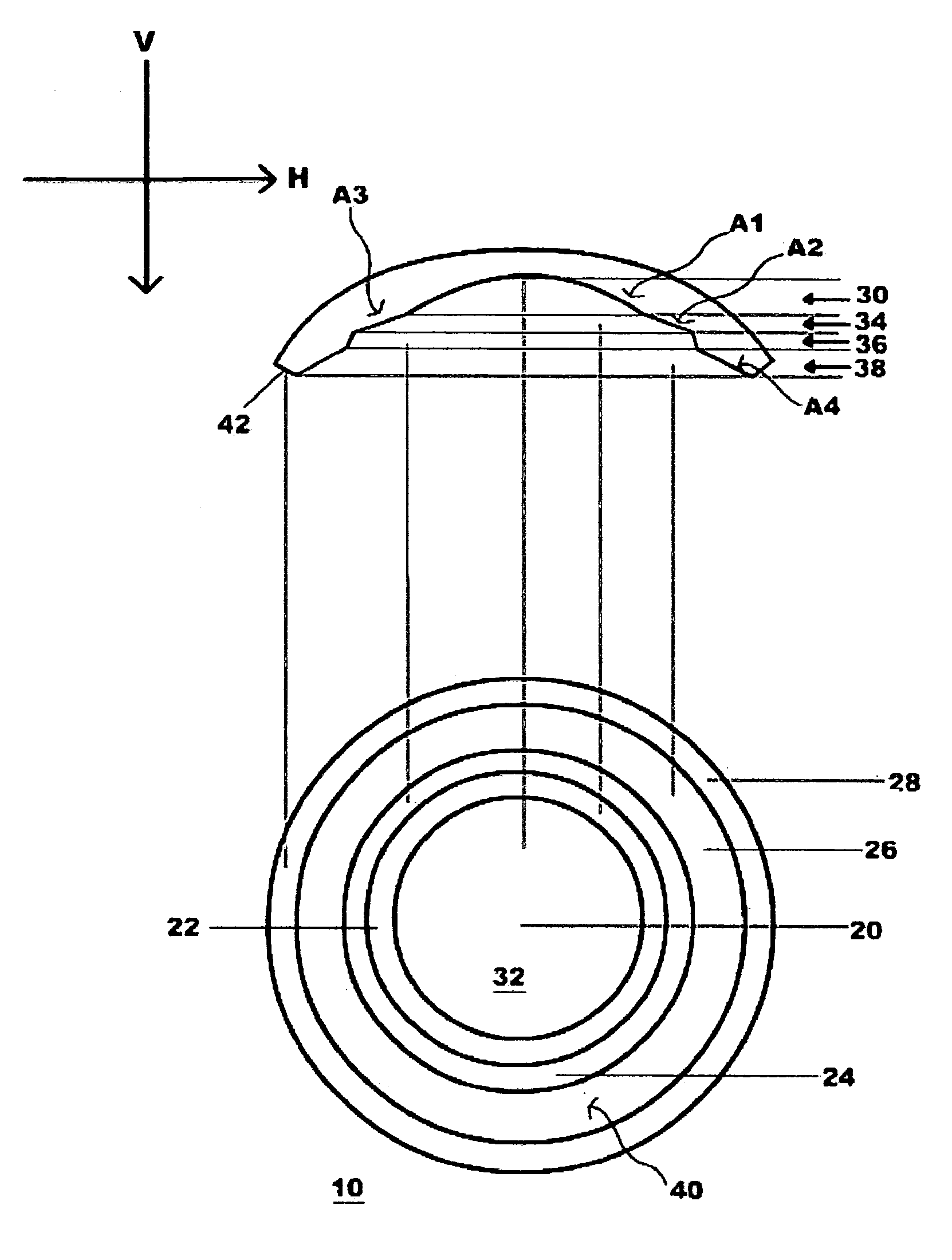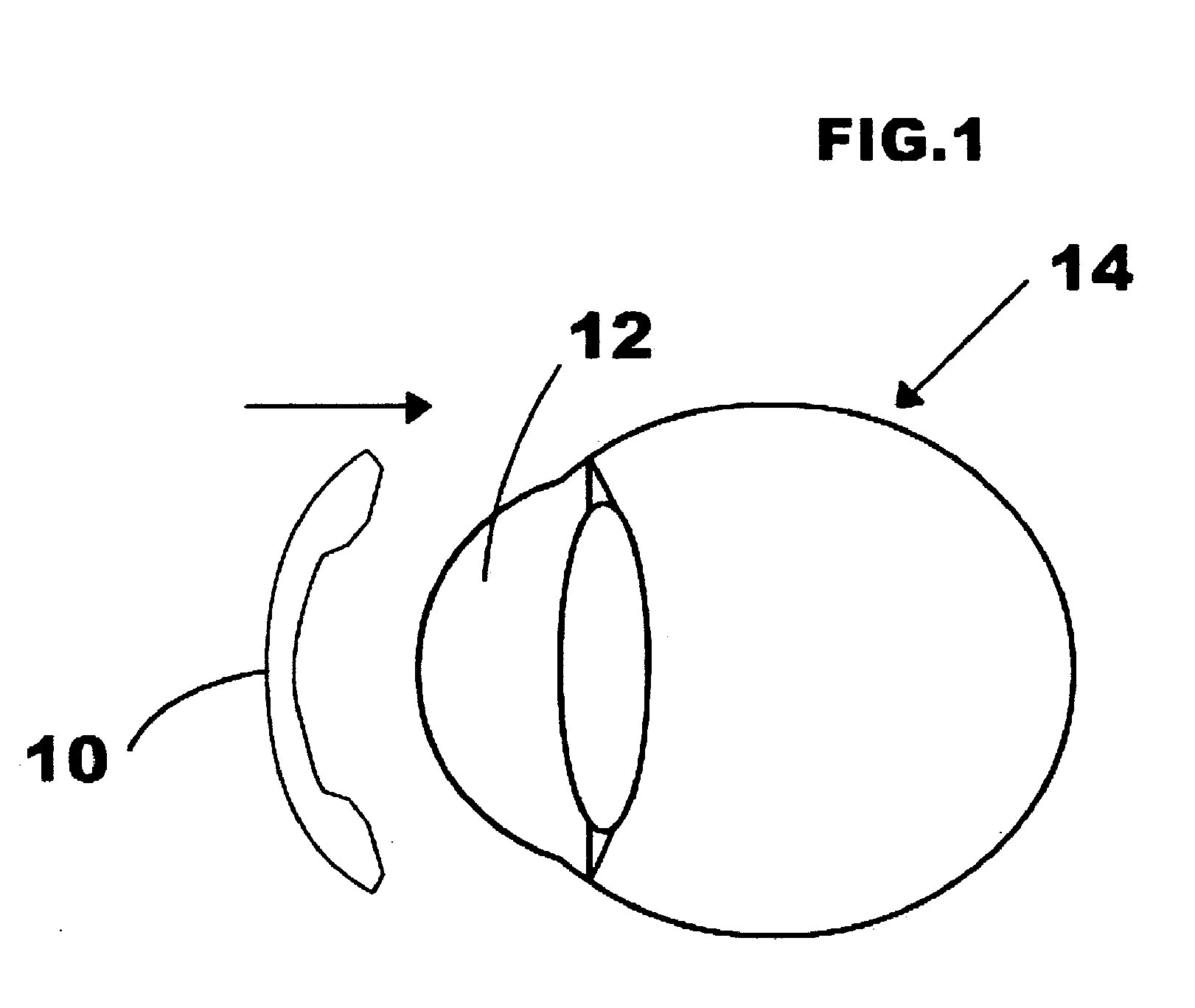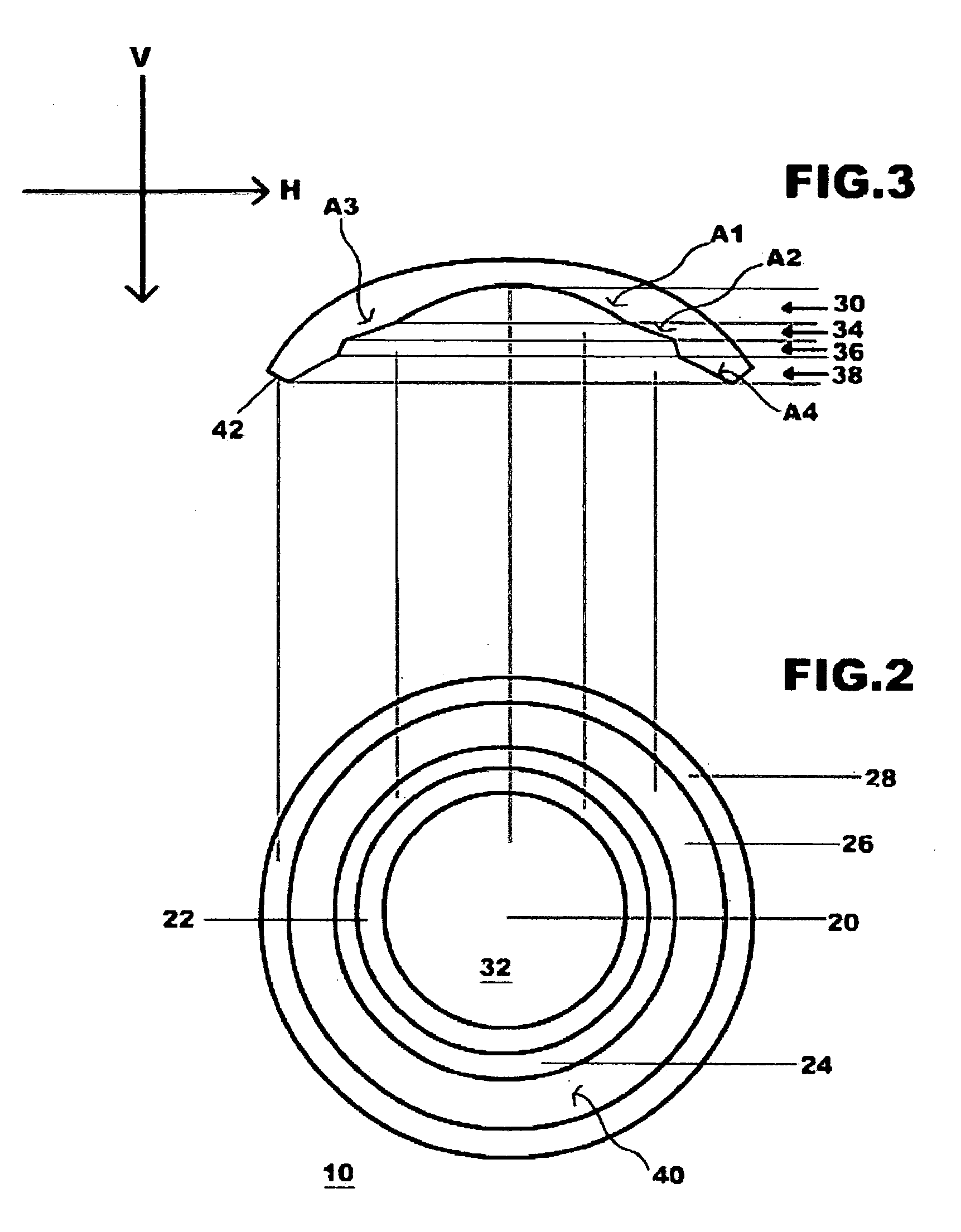Orthokertology and bi-focal contact lens
a contact lens and orthokertology technology, applied in the field of orthokertology and bi-focal contact lenses, can solve the problems of myopia or nearsightedness, eye cannot focus on both far and near objects, and many people experience difficulties in vision, so as to reduce myopia, hyperopia, or astigmatism
- Summary
- Abstract
- Description
- Claims
- Application Information
AI Technical Summary
Benefits of technology
Problems solved by technology
Method used
Image
Examples
example 1
[0062]A contact lens having the following dimensions was provided for a AA0786 patient:
[0063]
[0064]KM: 43.375 D(7.78 mm)@H, 44.5 D(7.85 mm) @V
[0065]Refraction: +2.00–0.75@130 (hyperopia +2.00D astigmatism 0.75D axis 130)
[0066]optical zone 20: width 4.0 mm, radius of curvature 7.25 mm
[0067]plateau zone 22: width 1.1 mm, radius of curvature 9.79 mm
[0068]fitting zone 24: width 0.5 mm, radius of curvature 6.57 mm
[0069]alignment zone 26: width 1.2 mm, radius of curvature 7.85 mm
[0070]peripheral zone 28: width 0.4 mm, radius of curvature 11.30 mm
[0071]
[0072]KM:43.375 D(7.78 mm) @H, 44.5 D(7.85 mm)@V
[0073]Refraction: +3.00–1.00@40 (hyperopia +3.00 D and astigmatism 1.00 D axis 40 degree)
[0074]optical zone 20: width 4.0 mm, radius of curvature 7.16 mm
[0075]plateau zone 22: width 1.1 mm, radius of curvature 9.85 mm
[0076]fitting zone 24: width 0.5 mm, radius of curvature 6.59 mm
[0077]alignment zone 26: width 1.2 mm, radius of curvature 7.85 mm
[0078]peripheral zone 28: width 0.4 mm, radius of ...
example 2
[0081]A contact lens having the following dimensions was provided for a AA0751 patient:
[0082]
[0083]KM: 42.25(7.99 mm), 43.125(7.83 mm)
[0084]Refraction: −3.00–0.50@90 (myopia −3.00 D astigmatism 0.50D axis 90 degree)
[0085]With Presbyopic Near addition of +1.50D, corrected to 20 / 20 at 40 cm
[0086](Since the right eye is the sighting eye for far, we designed a reverse geometric lens for right eye to correct her myopia only)
[0087]optical zone: width 5.6 mm, radius of curvature 8.89 mm
[0088]fitting zone : width 0.8 mm, radius of curvature 7.04 mm
[0089]alignment zone: width 1.5 mm, radius of curvature 8.03 mm
[0090]peripheral zone: width 0.4 mm, radius of curvature 11.80 mm
[0091]
[0092]KM:42.00 D(8.04 mm))42.65 D(7.91 mm)
[0093]Refraction: −3.00–0.50@75 (myopia −3.00 D and astigmatism 0.50D axis 75 degree)
[0094]With presbyopic near addition of +1.50 D, corrected to 20 / 20 at 40 cm
[0095](We corrected her left eye for myopia as well as presbyopia simultaneously)
[0096]inner optical zone 20a: widt...
PUM
 Login to View More
Login to View More Abstract
Description
Claims
Application Information
 Login to View More
Login to View More - R&D
- Intellectual Property
- Life Sciences
- Materials
- Tech Scout
- Unparalleled Data Quality
- Higher Quality Content
- 60% Fewer Hallucinations
Browse by: Latest US Patents, China's latest patents, Technical Efficacy Thesaurus, Application Domain, Technology Topic, Popular Technical Reports.
© 2025 PatSnap. All rights reserved.Legal|Privacy policy|Modern Slavery Act Transparency Statement|Sitemap|About US| Contact US: help@patsnap.com



